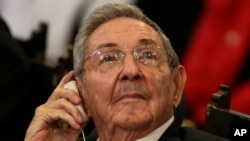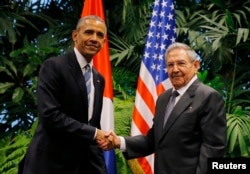Raul Castro permanently succeeded his elder brother as Cuba's president in February 2008, but he had led the communist country for more than a decade prior to Fidel's death on Friday.
Although Raul was part of the revolution that brought Fidel to power in 1959, he remained in the political background, holding several positions while being regarded as Fidel's second in command. When his succession became official in February 2008, he began enacting political, economic and social reforms, including restoration of diplomatic relations with the United States. But the changes fell far short of what many observers had hoped for.
Raul Castro was born in Cuba in 1931. He became interested in politics early on, participating in a socialist youth group and studying social science for a while in Havana and Santiago.
During the 1959 revolution that overthrew dictator Fulgencio Batista, Raul Castro was leading a group of guerrilla fighters. When Fidel took charge of the country, he made Raul his top military official, a position he held through the Soviet era and well after the fall of the Berlin Wall, until he became president.
Several historical accounts indicate Raul ordered many executions in the years immediately following the revolution. He played an important role in 1962 Cuban missile crisis and fending off the 1961 Bay of Pigs invasion.
Often portrayed as a pragmatist in recent years, he provided counterpoint to Fidel, who was usually characterized as more hard line.
Raul's ability to run Cuba was tested in 2006 when Fidel needed surgery and temporarily turned over his presidential powers to his younger sibling.
By the time Raul permanently took over the country, his wife had died (in 2007) and his four children were grown. He began reshaping Cuba's socialist programs, allowed businesses to be owned by citizens, loosened travel restrictions and foreign investment, brought in his own people to staff his cabinet, and set limits on presidential terms, which would legally force him to step down in 2018.
He and U.S. President Barack Obama announced their intent to renew diplomatic relations in 2014 after 54 years.











